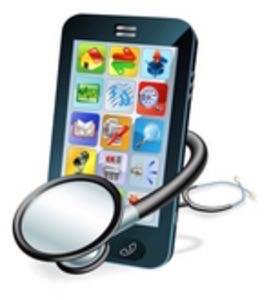The recurring theme at the TedMed conference earlier this month was the application of Moore’s Law to health care. As Robin Carey noted after the conference on Social Media Today, the idea that Moore’s Law could be driving health care innovation “has given American medicine a sense of inevitable optimism.”

Moore’s Law, which is more a rule of thumb than a law, originally applied to computer hardware and the notion that the number of transistors that can be placed on an integrated circuit doubles approximately every two years. The law has been used to describe the speed of advance in a wide range of technologies.
But there is a reason that people in health care should only be cautiously optimistic when applying it to their industry.
“The problem is that with the plethora of mHealth apps… very few people are using them. Which begs the question: Why isn’t the technology adapting to people’s needs rather than the other way around?” – David Haddad, program director for Open mHealth
“I wish the enthusiasm was correct, but I fear it is not,” said Dr. J. Deane Waldman, Professor of Pediatrics, Pathology & Decision Science at the University of New Mexico. Deane said the industry has three disincentives to innovation that will partly suppress the effect of Moore’s law, including:
One of the other big problems is that, unlike other industries, new technologies in health care are not driven by consumer demand. It’s up to doctors and hospitals to decide whether to implement the latest and greatest piece of health care tech.
- Regulatory oversight that is completely focussed on compliance. “It discourages risk-taking and innovation,” Deane said.
- Health care doesn’t have the same financial reward system. Facebook isn’t about to pay $1 billion for the latest hot-ticket item in imaging and informatics.
- And, finally, Deane said, “Security always trumps information sharing, and so better, faster linkages are constrained because of security concerns, most of which are bogus.”
“Consumers can be expected to embrace digital health tools more quickly, and this will drive a demand for improvement that should increase the pace of institutional change,” said Robert B. McCray, president and CEO of the Wireless-Life Sciences Alliance. “There is great economic resistance to change, however, and more trade protections in health care, so institutional and professional resistance, rather than technology, are the limiting factors in the creation of ‘better health care’.”
The other side of the health care equation is, however, directed squarely at consumers. A wide range of apps aimed at boosting preventive health care measures, including calorie counters, pedometers and monitoring tools for diabetics, are readily available for download onto mobile devices. But David Haddad, the program director for Open mHealth, an open source software architecture project, says they are not necessarily addressing consumer demand.

“If Moore’s Law applies to machines (as is also the case with mobile devices), it’s crashing up against our poor wetware between our ears, which isn’t improving at Moore’s Law, but rather suffers exponential performance degradation with data overload from those Moore’s Law-powered machines,” Haddad said in an email. “The problem is that with the plethora of mHealth apps (on the App Store, Google Play, and in the developing world), very few people are using them. Which begs the question: Why isn’t the technology adapting to people’s needs rather than the other way around?”










